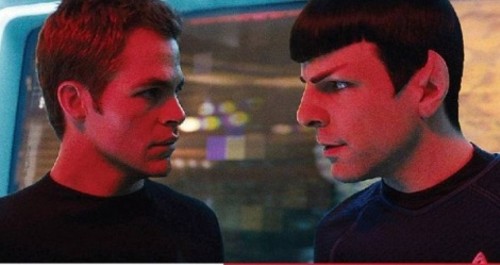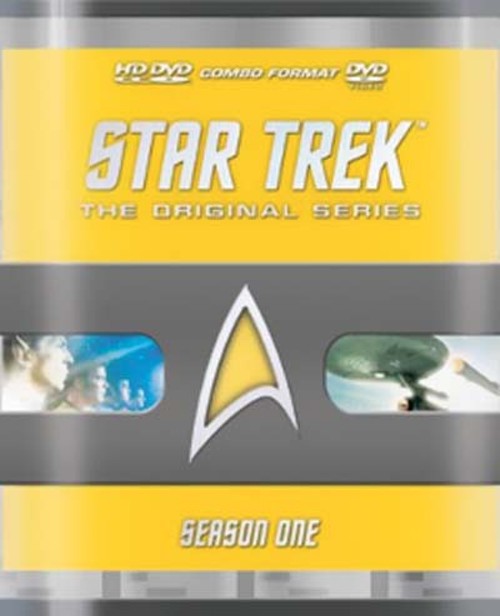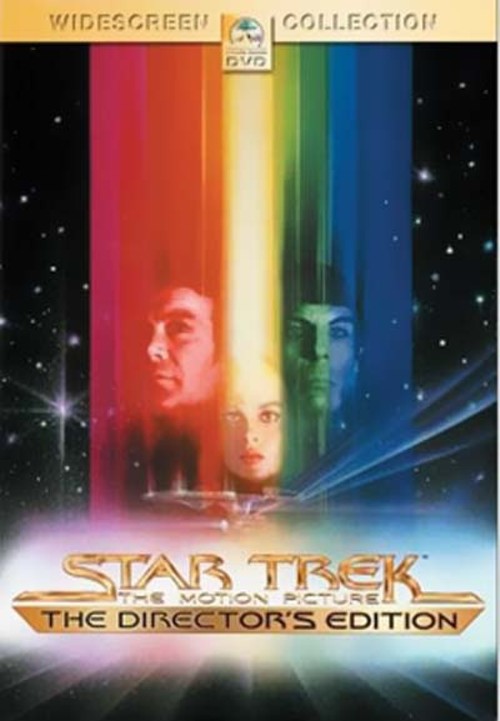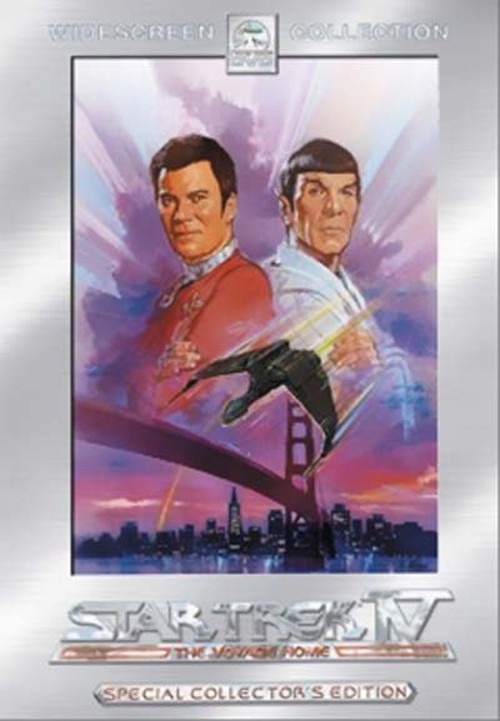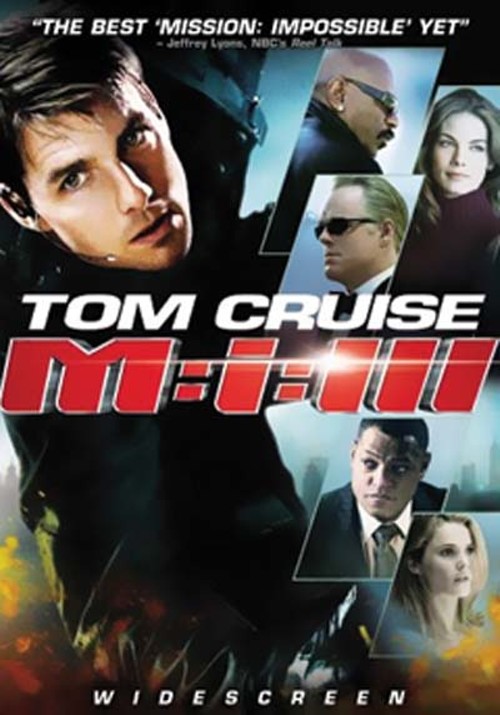Star Trek
Going Boldly: J.J. Abrams’ energetic Star Trek embraces some of its history, and throws some away.
By Scott Renshaw @scottrenshawYou tell me, Trekkers and Trekkies: more than 40 years since its inception, what does the Star Trek “brand” mean, anyway?
Director J.J. Abrams has let it be known in publicity interviews that he wasn’t a huge fan of Star Trek before diving into this prequel re-launch of the franchise—not already intimately acquainted with the significance of pon farr and dilithium crystals. It was a risky move for Paramount Pictures, because perhaps more than any other property in all of pop culture, Trek depends on the buy-in of the die-hards. And fidelity isn’t always a precursor to creativity.
Abrams (Alias, Mission: Impossible III) has shown that he knows both how to deliver brainy action, and how to leave his distinctive thumbprint on an existing franchise. With Star Trek, he turns out a terrifically energetic, highly entertaining summer adventure. The only question is whether it means anything in particular to call this story Star Trek.
It’s certainly true that the names of the protagonists are familiar. Following in the footsteps of his late father, young hotshot James Kirk (Chris Pine) enlists with Starfleet to become an officer; the half-human/half-Vulcan Spock (Zachary Quinto) is already first officer to veteran Capt. Pike (Bruce Greenwood). When a mysterious Romulan called Nero (Eric Bana) threatens the very existence of the planet Vulcan, Kirk and Spock find themselves together on the brand-new starship Enterprise, attempting to prevent planetary genocide. And, wouldn’t you know it, but Kirk and Spock have a history—or maybe a future—with our bad guy.
Accompanying Kirk and Spock on the Enterprise’s maiden voyage are plenty of other familiar names: Dr. Leonard “Bones” McCoy (Karl Urban); communications officer Uhura (Zo%uFFFD Saldana); helmsmen Sulu (John Cho) and Chekhov (Anton Yelchin); and eventually engineer Scotty (Simon Pegg). And the casting, across the board, is terrific. Pine gives Kirk the kind of star charisma that makes real leaders, while Urban nails McCoy’s grouchy cadence and Pegg provides pitch-perfect comic relief. Bana may not make for the most gripping villain we’ve ever seen, but it’s a forgivable lapse. We’re here to spend time with the crew, and they’re a fun bunch of characters.
They’re also part of a typically thrilling and kinetic piece of visual storytelling by Abrams. The guy knows how to direct the hell out of an action set-piece, whether it’s Kirk and Sulu freefalling toward their sabotage mission on Nero’s doomsday weapon, or Kirk trying to outrun carnivorous beasties on a desolate icy moon. Abrams has a sense for exactly where to punch up the tension, and where to puncture that tension with a laugh. From start to finish, Star Trek feels remarkably efficient, which makes it a rare commodity in the often-bloated blockbuster universe.
In fact, it’s fair to say that Star Trek has pretty much everything we go to summer movies to see—so is it nit-picking to question its Trek-ish bona fides? Screenwriters Roberto Orci and Alex Kurtzman provide plenty of touchstones for the fans—whether it’s a growled “Dammit, man,” from Bones, or a reference to Kirk’s middle name, or Spock sporting a green cut on his lip after a brawl—and there’s no question that many of Star Trek’s simple pleasures come from recognition. But the original series and several subsequent incarnations won fans over with Gene Roddenberry’s utopian vision of humanity united as part of an intergalactic United Nations; the classic stories were about discovery and understanding. The only example of détente this film offers is that which must develop between the initially clashing Kirk and Spock. Like Star Trek II, this is a story driven by a vengeance-minded antagonist—and like Star Trek II, it may ultimately be embraced for all of the reasons it’s actually least like the original series.
That’s not to say Abrams doesn’t embrace some of Trek’s most cherished plot devices. You’ve got more than one instance of the ever-popular space “anomaly,” and some convenient time-traveling—though the latter results in some unnecessary complicating of character histories, and seems primarily to be an excuse for an appearance by Leonard Nimoy as Spock Classic. Abrams has probably been just savvy enough to know what to keep in his visit to our collective future, and what to discard. This film works because it’s recognizably Star Trek, and also because it’s not only recognizably Star Trek. That’s what I’d call going boldly.
STAR TREK
Chris Pine, Zachary Quinto, Eric Bana
Rated PG-13
Try These:
| Star Trek–Season 1 (1966) William Shatner Leonard Nimoy Not Rated |
|
| Star Trek: The Motion Picture (1979) William Shatner Leonard Nimoy Rated PG |
|
| Star Trek IV: The Voyage Home (1984) William Shatner Leonard Nimoy Rated PG |
|
| Mission: Impossible III (2006) Tom Cruise Philip Seymour Hoffman Rated PG-13 |
Speaking of...
-
Deep Space Nine Finally Released, With Some Issues
A look into the newly released DVD collection.
- Feb 13, 2017
-
The Pipeline: The Star Trek Episode Collector's Dream
Celebrating 50 years with everything coming to Blu-ray and DVD.
- Jan 30, 2017
-
The Pipeline: Paramount Finally Cracks Open The Roddenberry Vault For Blu-Ray
Rare Star Trek footage finally finds its way to fans with classic episodes.
- Dec 13, 2016
- More »
More by Scott Renshaw
-
Faces of Salt Lake County book and portrait reception
Images and personal stories in a new book reveal local demographic diversity
- Apr 17, 2024
-
Feature film review: THE BEAST
A filmmaker's compelling ideas get a bit tangled in references to his creative influences.
- Apr 17, 2024
-
Film Reviews: New Releases for April 12
Civil War, Escape from Germany, Coup de Chance, Hundreds of Beavers, La Chimera, Sting
- Apr 11, 2024
- More »
Latest in Film Reviews
Readers also liked…
-
Power Plays
Two satirical comedies explore manipulations and self-delusions by those with power.
- Aug 31, 2022


